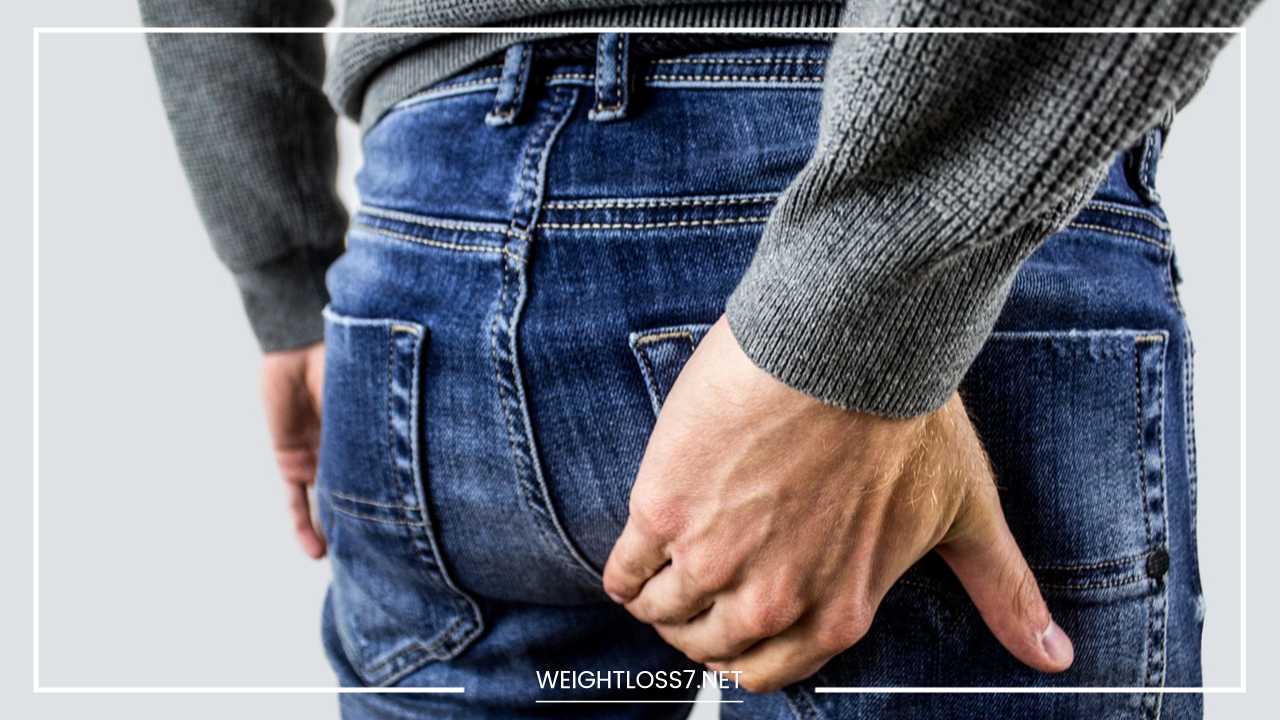Hemorrhoids: Causes, Symptoms, Treatment & Prevention

Hemorrhoids
Hemorrhoids: A Comprehensive Guide
Hemorrhoids, also known as piles, are a prevalent condition affecting millions globally. These swollen veins in the anal canal and rectum can be a source of significant discomfort, causing itching, bleeding, and pain.
While rarely a serious health concern, hemorrhoids can undoubtedly disrupt your daily life.
This comprehensive guide delves into everything you need to know about hemorrhoids. We’ll explore the different types, delve into the root causes, and shed light on the symptoms, diagnosis, treatment options, and effective prevention strategies.
Unveiling the Different Types of Hemorrhoids
Hemorrhoids come in two main varieties, each with distinct characteristics:
-
Internal Hemorrhoids: These develop within the rectum, typically painless but prone to bleeding during bowel movements. They’re further categorized into four grades based on severity:
- Grade 1: Remain inside the rectum, causing minimal discomfort.
- Grade 2: Protrude during bowel movements but retract back into the rectum naturally.
- Grade 3: Protrude during bowel movements and may require gentle manual pushing to return them inside.
- Grade 4: Permanently protrude from the rectum, potentially causing irritation and discomfort.
-
External Hemorrhoids: These form under the skin around the anus. Unlike internal hemorrhoids, external hemorrhoids can be quite painful, especially when they become thrombosed (develop a blood clot).
Demystifying the Causes of Hemorrhoids
The development of hemorrhoids can be attributed to several factors, including:
- Straining During Bowel Movements: Straining due to constipation, diarrhea, or lifting heavy objects puts immense pressure on the veins in the rectum and anus, increasing the risk of hemorrhoids.
- Pregnancy: The growing uterus in pregnant women exerts pressure on the veins in the pelvis and rectum, making them more susceptible to becoming hemorrhoids.
- Obesity: Excess weight puts a significant strain on the veins throughout the body, including those in the rectum and anus.
- The Aging Process: As we age, the tissues supporting the veins in the rectum and anus weaken, making them more prone to bulging and forming hemorrhoids.
- Low-Fiber Diet: A diet lacking in fiber can lead to constipation and straining during bowel movements, both of which contribute to hemorrhoids.
- Sitting for Extended Periods: Sitting for long durations, especially on the toilet, restricts blood flow in the rectum and anus, creating a favorable environment for hemorrhoid development.
Recognizing the Symptoms of Hemorrhoids
The symptoms of hemorrhoids can vary depending on the type and severity. Here’s a breakdown of the common signs to watch out for:
- Pain: This symptom is more prevalent with external hemorrhoids, especially when thrombosed.
- Bleeding: Bright red rectal bleeding is a common indicator of internal hemorrhoids. The bleeding is usually painless and might be visible on toilet paper or in the stool.
- Itching: Hemorrhoids can cause persistent itching around the anus, leading to discomfort and irritation.
- Mucus Discharge: Mucus discharge from the anus can sometimes occur with hemorrhoids.
- Prolapse: In severe cases, particularly with grade 3 and 4 internal hemorrhoids, the hemorrhoidal tissue may protrude from the anus.
Navigating Diagnosis: How Doctors Identify Hemorrhoids
In most cases, a doctor can diagnose hemorrhoids through a physical examination and a detailed discussion of your symptoms. The physical examination often involves a digital rectal exam, where the doctor feels for hemorrhoids inside the rectum.
However, in some situations, additional tests might be necessary to rule out other conditions, such as colon cancer. These tests may include:
- Colonoscopy: This procedure involves inserting a long, thin tube with a camera attached into the colon to allow the doctor to visualize its inner lining.
- Sigmoidoscopy: Similar to a colonoscopy, but this procedure only examines the lower section of the colon (sigmoid colon) and the rectum.
Exploring Treatment Options for Hemorrhoids
The treatment approach for hemorrhoids depends on the severity of your symptoms. Here’s an overview of the different options available:
- Lifestyle Changes: Often the first line of defense, implementing lifestyle modifications can significantly improve symptoms and potentially prevent future occurrences. These changes include:
- Increasing Fiber Intake: Consuming a diet rich in fiber helps soften stool and facilitates easier passage, reducing straining during bowel movements. Fruits, vegetables, and whole grains are excellent sources of fiber.
- Staying Hydrated: Drinking plenty of fluids throughout the day keeps your stool soft and easier to pass.
-
Utilizing Stool Softeners and Other Over-the-Counter Remedies: Stool softeners can be helpful, especially during flare-ups, by making it easier to pass stool and reducing straining. Over-the-counter creams, ointments, and suppositories containing witch hazel, hydrocortisone, or lidocaine can provide temporary relief from itching, burning, and discomfort.
-
Sitz Baths: Taking warm sitz baths for 15-20 minutes, several times a day, can help soothe hemorrhoids and promote healing. Sitz baths involve sitting in a few inches of warm water (not hot) in a bathtub or a specialized sitz bath basin.
-
Bulk-Forming Laxatives: In some cases, your doctor might recommend bulk-forming laxatives, which help increase stool volume and promote softer stools. However, it’s crucial to drink plenty of fluids alongside these laxatives to prevent constipation.
Minimally Invasive Procedures:
If lifestyle changes and over-the-counter remedies fail to provide adequate relief, your doctor might recommend minimally invasive procedures.
These procedures aim to shrink or remove hemorrhoids and are typically performed in an outpatient setting with minimal recovery time. Some common minimally invasive procedures include:
- Rubber Band Ligation: This procedure involves placing a small rubber band around the base of an internal hemorrhoid to cut off its blood supply, causing it to shrink and eventually fall off.
- Sclerotherapy: An injection of a solution into the hemorrhoid tissue shrinks it.
- Infrared Coagulation: This procedure uses a focused beam of infrared light to shrink hemorrhoid tissue.
- Laser Coagulation: Similar to infrared coagulation, but uses a laser to target and shrink hemorrhoid tissue.
Surgical Procedures:
In rare cases, when other treatment options prove ineffective or for severe hemorrhoids, surgery might be necessary. Hemorrhoidectomy is the surgical removal of hemorrhoidal tissue.
It’s usually performed as an outpatient procedure and requires a longer recovery time compared to minimally invasive procedures.
Preventing Hemorrhoids: Proactive Strategies for a Healthy Future
Fortunately, several proactive measures can significantly reduce your risk of developing hemorrhoids:
- Maintain a Fiber-Rich Diet: As mentioned earlier, consuming plenty of fiber is crucial. Aim for at least 25-35 grams of fiber daily from fruits, vegetables, and whole grains.
- Stay Hydrated: Drinking sufficient fluids, around 6-8 glasses of water daily, keeps your stool soft and easier to pass.
- Answer the Call of Nature: Don’t ignore the urge to have a bowel movement. Delaying bowel movements can lead to constipation and straining.
- Maintain a Healthy Weight: Losing excess weight can alleviate pressure on the veins in the rectum and anus.
- Exercise Regularly: Regular physical activity promotes healthy blood flow and digestion, reducing the risk of hemorrhoids.
- Limit Straining: Avoid straining during bowel movements. If you have difficulty passing stool, consult your doctor.
- Avoid Sitting for Long Periods: Take frequent breaks from sitting, especially on the toilet. Get up and move around every 30 minutes or so.
When to Seek Medical Attention
While hemorrhoids are often uncomfortable, they’re rarely a serious health concern. However, seeking medical attention is crucial if you experience:
- Severe pain
- Persistent bleeding
- Difficulty passing stool
- Prolapsed hemorrhoid that cannot be pushed back in
- Symptoms that worsen despite home treatment
Early diagnosis and treatment of hemorrhoids can significantly improve your comfort and prevent complications.
Living with Hemorrhoids: Tips for Managing Discomfort
Hemorrhoids can be a source of annoyance and discomfort. Here are some additional tips that can help you manage hemorrhoids and improve your quality of life:
- Maintain Good Hygiene: Keep the anal area clean and dry by wiping gently with soft, fragrance-free wipes after bowel movements. Avoid using harsh soaps or douches that can irritate the area.
- Wear Loose-Fitting Clothing: Tight clothing can irritate hemorrhoids. Opt for loose-fitting cotton underwear and clothing to allow for better airflow and prevent further irritation.
- Apply Cold Compress: Applying a cold compress to the anal area for 10-15 minutes at a time can help reduce swelling and pain. Wrap the compress in a thin cloth to prevent direct skin contact.
- Dietary Adjustments: While increasing fiber intake is essential, certain foods can irritate hemorrhoids. Consider limiting spicy foods, alcohol, and caffeine, as these can worsen symptoms.
Hemorrhoids and Pregnancy
Hemorrhoids are quite common during pregnancy due to the growing uterus putting pressure on the veins in the rectum. Here are some tips for pregnant women to manage hemorrhoids:
- Prenatal Exercise: Regular exercise approved by your doctor can help improve circulation and prevent constipation.
- Pelvic Floor Exercises: Strengthening your pelvic floor muscles can improve blood flow and potentially reduce the risk of hemorrhoids.
- Wear Maternity Support: Maternity support garments can help alleviate pressure on the abdomen and veins, reducing hemorrhoid discomfort.
Hemorrhoids and Postpartum Care
Hemorrhoids can persist or worsen after childbirth. Here are some tips for postpartum care:
- Sitz Baths: Regularly taking warm sitz baths can provide significant relief from pain and swelling.
- Stool Softeners: If you experience constipation after delivery, consult your doctor about using stool softeners to ease bowel movements.
- Hemorrhoid Creams: Over-the-counter creams containing witch hazel or hydrocortisone can be helpful in reducing itching and discomfort.
Potential Complications of Hemorrhoids
While uncommon, hemorrhoids can lead to certain complications, including:
- Anemia: Chronic blood loss from hemorrhoids can, in rare cases, lead to iron deficiency anemia.
- Strangulated Hemorrhoid: If the blood supply to an external hemorrhoid is cut off, it can become strangulated, causing severe pain and requiring immediate medical attention.
Final Word
Hemorrhoids are a prevalent condition, but with proper knowledge, lifestyle modifications, and potentially medical intervention, they can be effectively managed.
Remember, a healthy diet, staying hydrated, and avoiding straining during bowel movements are key to preventing and controlling hemorrhoids.
If you experience any concerning symptoms, don’t hesitate to consult your doctor for a diagnosis and personalized treatment plan.
By taking charge of your health and implementing these strategies, you can minimize the impact of hemorrhoids and maintain a comfortable and active lifestyle.

















